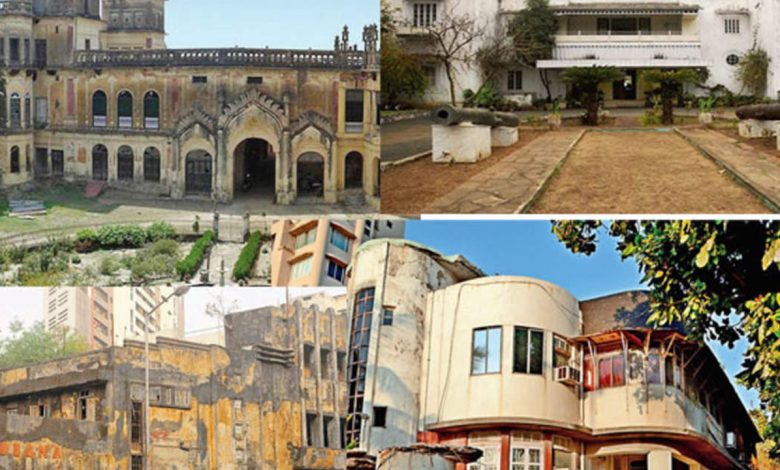Daily Current Affairs for UPSC
Enemy Properties
Syllabus- Government policies and interventions [GS Paper-2]

Context- The Union Home Ministry has begun the process of evicting and selling enemy properties, which are the immovable assets of Chinese and Pakistani citizens.
Key Highlights
- India is home to a total of 12,611 establishments that are considered enemy property and are roughly valued at over Rs. 1 lakh crore.
- The authority established by the Enemy Property Act is the Custodian of Enemy Property for India (CEPI), which owns the enemy property.
- The notification stated that the custodian must first make an offer to the occupant for enemy properties with a value of less than one crore rupees, and if the occupant declines the offer, the enemy property must be disposed of in accordance with the guidelines.
- The Enemy Property Disposal Committee will determine the rate at which the CEPI will dispose of enemy properties with a value of less than 100 crore rupees and a valuation of less than one crore rupees.
- The e-closeout foundation of public venture, the Metal Piece Exchange Organization Restricted, will be utilized by the CEPI for e-sale of adversary properties, the home service said.
- According to officials, the sale of enemy properties, primarily movable assets like shares and gold, has netted the government more than 3,400 crore rupees.
- The Home Ministry has already started a nationwide survey of enemy properties in 20 states and three Union Territories with the goal of finding all of these properties and making them money.
- The Directorate General of Defence Estates (DGDE) will conduct the nation’s first-ever survey to determine the value and current state of the enemy properties identified by the CEPI.
About Enemy property
- People moved from India to Pakistan after the 1965 and 1971 wars between India and Pakistan.
- The properties and businesses of those who assumed Pakistani nationality were taken over by the Indian government in accordance with the Defence of India Rules established by the Defense of India Act of 1962.
- The central government gave these “enemy properties” to India’s Custodian of Enemy Property.
- The same was done to the property of those who went to China following the Sino-Indian War in 1962.
- According to a clause in the Tashkent Declaration of January 10, 1966, India and Pakistan would discuss the return of the property and assets that were taken over by either side as a result of the conflict.
- However, Pakistan’s government disposed of all such assets in the country in 1971 itself.
Regulation of Enemy properties in India
- The Enemy Property Act of 1968 established the Custodian of Enemy Property for India as the permanent owner of enemy property.
- A few versatile properties as well, are classified as foe properties.
- The Enemy Property (Amendment and Validation) Bill, 2016, which made changes to the Enemy Property Act of 1968 and the Public Premises (Eviction of Unauthorized Occupants) Act of 1971, was approved by Parliament in 2017.
- The terms “enemy subject” and “enemy firm” were expanded by the amended Act to include:
- a citizen of India or a citizen of a country that is not an enemy who is the legal heir and successor of an enemy; and the rival firm’s successor, regardless of the nationality of its partners or members.
- Even if the enemy or enemy subject or enemy firm ceases to be an enemy as a result of death, extinction, winding up of business, or a change in nationality, or if the legal heir or successor is a citizen of India or a citizen of a country that is not an enemy, the amended law stipulated that the Custodian shall continue to hold the enemy property.
- In accordance with the Act, the Custodian may dispose of enemy properties that have been vested in him, subject to prior approval from the central government. The government may issue directions to the Custodian for this purpose.
Note
- Pakistani nationals owned 12,485 of the 12,611 CEPI-vested properties, while Chinese nationals owned 126 of them.
- Uttar Pradesh had the most enemy properties (6,255 properties), followed by West Bengal (4,088 properties), Delhi (659 properties), Goa (295 properties), Maharashtra (208 properties), Telangana (158 properties), Gujarat (151 properties), Tripura (105 properties), Bihar (94 properties), Madhya Pradesh (94 properties), Chhattisgarh (78 properties), and Haryana.
- Kerala has 71 enemy properties, while Uttarakhand has 69, Tamil Nadu has 67, Meghalaya has 57, Assam has 29, Karnataka has 24, Rajasthan has 22, Jharkhand has 10, Daman and Diu has four, and Andhra Pradesh and Andaman and Nicobar Islands each have one.





.png)



